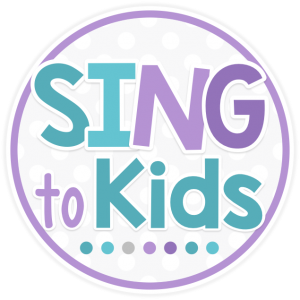It’s the beginning of the school year and you’re excited to jump right in to teaching all of the fabulous things you planned over the summer, right? Have you ever thought that before you jump right in, teaching procedures and expectations instead of music may be better for your students? In my early years, I thought it was important to begin teaching right away, but over the years, I’ve learned that explicitly teaching and reinforcing procedures and expectations is a better use of my time during those first lessons. Why? Because if I establish those procedures early on and consistently, then I spend less time reteaching them the rest of the school year. Here are some my top procedures to teach at the beginning of the school year.
How to Enter & Exit
I think it’s important to teach students how to enter and exit students in your room. Do you want students walking right in or do you want to greet them at the door? Do you have different seating arrangements for students on different days (e.g. sitting around a circle, row seats). How will you communicate that seating arrangement to students? When it’s time to line up, do you ask students to walk to the door? (And what really happens – they run!) Do you have students open the door, or do you? So many things to think about for such a simple procedure, right?
I teach my students to stop outside my door and wait for me to greet them. That way, if I’m moving instruments, talking to a student about behavior, or in the restroom, students wait until I am ready for them to come in. I communicate the way I want students to sit to begin class, then greet each child as they enter the room. At the end of class, I ask our line leader to line first, then our door holder and “caboose,” Then I invite students to line up (and yes, we practice walking safely to the door). I actually ask my students to line up about a foot from the door, so that I can go to the door and open it (again, a safety precaution), instead of asking a student to do so. All of these decisions about entering & exiting my room were conscious decisions to ensure that my students stay safe and enter and leave the room ready for learning.
How to Sit in Class
This is one of my favorite things to teach in music class! It’s so silly, but I explicitly teach how to sit in music class. In my class, students may sit on their knees or sit legs crossed. For most students, one position is more comfortable than another. I also teach students that while in a seated position, their hands should be in their lap. Why? Because I often walk the perimeter of the room and don’t want to worry about stepping on someone’s hands. The same is true when we play music games. “Hands in lap” is my simple statement that reminds students to keep their bodies safe.
We also discuss self space. When a students sits, they should have 6-8 inches of space between them and another student. Once we’ve established these three simple expectations, then we practice the WRONG way to sit in class. Then we practice the right way again. Then we practice another WRONG way, followed by the right way again. My students think it is so silly to do this, but here’s the simple truth: we know what something is, by knowing what it isn’t. We know the right way to sit by showing all of the wrong ways we can sit. We practice this 4-5 class periods, until it becomes a procedure – something we do every class with little or know reminder.
How to Get Materials
In each of my music classes, there comes a time when we’re going to need paper, pencils, crayons, or other manipulatives. Asking students to get those materials can look a bit like a Black Friday sale if you don’t have procedures in place! If you anticipate having students do any written work this year, then have procedures in place for getting those materials. I have a counter where I keep paper, pencils, and markers in my room.
When I ask students to get materials, I always ask for no more than 6 students at a time and I ask them to line up one behind the other. As someone gets their materials, the next seated person may get up and join the line. I even practice what NOT to do with students by being the last person in line, but trying to reach over everyone else get to a materials. By modeling what not to do, you use humor while demonstrating undesirable behaviors. Students get the message quickly!
How to Participate in Class
Why is it that students KNOW to raise their hand to answer questions in their classroom, but in the music room it’s every boy/girl for themselves? Honestly! Teaching explicitly (and reteaching) how to participate in class is so important to the long-term productivity of your classroom. If you want your students to raise their hand to speak, teach them and hold them accountable to it. If you want students to use sign language for basic things (e.g. bathroom), then teach it! If you want your students to address you by name instead of “music teacher,” then teach it.
But teaching it is not enough – you must practice it as well! I will not address anyone who blurts out an answer in class, but I will give them a second chance to raise their hand and be called on. There are MANY students in your room who need time to process questions/answers and children who blurt out answers take away the opportunity for those students to think and process the answers on their own. Raising your hand to answer a question isn’t just manners, it’s also good teaching!
How to Handle Disappointment
This is something I never had to teach, let alone think about when I started teaching. But we all have students who need to learn how to take turns, who are overcome with emotion, or don’t know how to self-regulate emotions. About 8 years ago, I began using a “Safe Spot” in my room. It was simply a chair removed from the group, but still in the line of sight to the classroom learning. It was a place to go when students needed to calm themselves.
After a few years, I began adding a “Calm Down Caddy” alongside the safe spot. My calm down caddy included koosh balls, squeeze toys, small stuffed animals, and 3-minute sand timers. Those items helped students who struggled with self-regulation and needed a physical distraction to help them to return to a state of calm. The challenge is that some students are simply curious about the safe spot, so I teach explicitly when you may go there and who might need it.
How to Behave in an Emergency
If you’re like my school, we practice a variety of drills each year in case of an emergency. We practice tornado drills, evacuation drills, and lockdown drills. The problem is, I practice each of those drills with the class that is in my room at the time. What happens when the REAL thing happens with a class who has not explicitly practiced with you? What happens when the REAL thing happens and your students have a guest teacher? Make time to practice what to do in an emergency with each class! In the fall, I practice the evacuation drills during the last five minutes of class. (It’s a great little brain break on a sunny day!)
As soon as the weather changes, we practice the lockdown drills, because it’s cold, wet, or snowy outside! Each spring, we practice the tornado drills. It ensures that my students know what to do in case of an emergency. Don’t want to set aside time for it in your class? Then do it on a day when kids come late to testing, field trip, or delayed start/half day! There’s always one lesson a year that is thwarted by the unexpected and what you had planned goes out the window! Use that day to teach or review safety procedures!
Is there a procedure I left out? How do you teach procedures in your classroom? Leave me a comment below!






Love this list, especially the point about handling disappointment!